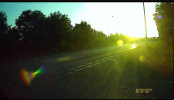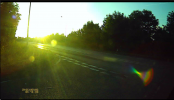First - Greetings. This is my first post to this forum. I hope you are all doing fine, driving safely and enjoying life.
My question is about what you considered acceptable/required FOV angle.
Some dash cams labeled at 120, some 170, etc.
Interestingly enough, looking at this thread:
https://dashcamtalk.com/forum/threads/night-2-b40-a118-vs-panorama-vs-mobius-b-vs-mini-0803.6312/
The Panorama seems to have the widest angle, though it's published as 150 degrees while the b40 as 170.
I actually considered getting 2 mobius cameras, side-by-side, so to cover a greater area.
Thoughts?
My question is about what you considered acceptable/required FOV angle.
Some dash cams labeled at 120, some 170, etc.
Interestingly enough, looking at this thread:
https://dashcamtalk.com/forum/threads/night-2-b40-a118-vs-panorama-vs-mobius-b-vs-mini-0803.6312/
The Panorama seems to have the widest angle, though it's published as 150 degrees while the b40 as 170.
I actually considered getting 2 mobius cameras, side-by-side, so to cover a greater area.
Thoughts?
Last edited by a moderator:


